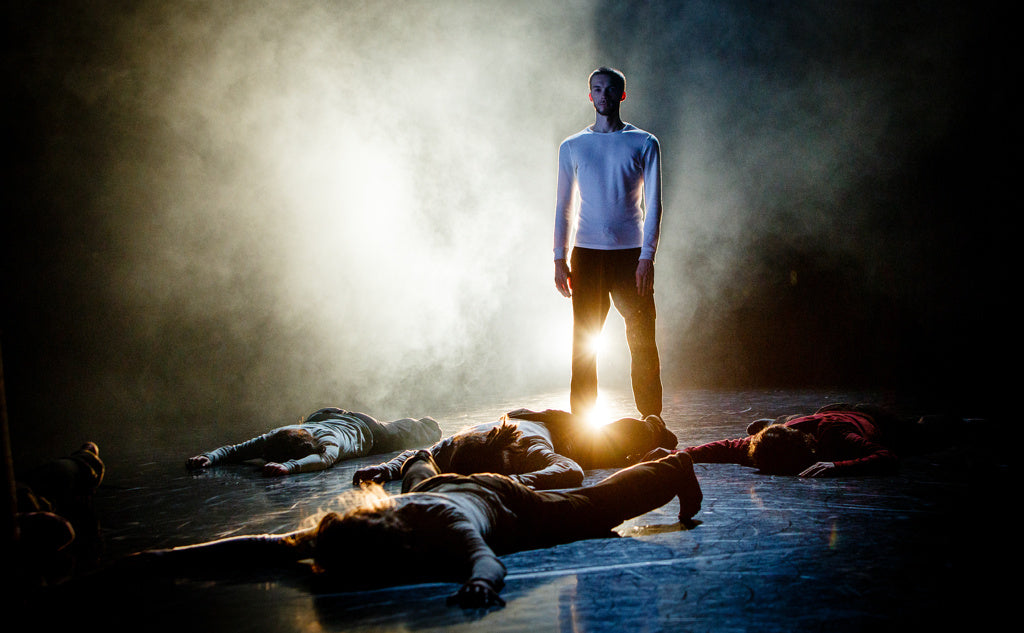The work is split into two acts—'Life' and 'Death'—and draws on Terry Pratchett's The Last Hero as well as the tale of Orpheus, whose attempt to rescue his wife Eurydice from the underworld ends in vain when he violates his terms with Hades and glances back at her. The first half sees two dancers emerge as loose portrayals of these ill-fated figures and together paint an elegiac portrait of demise, Eurydice's decline spurred on by an ominous third figure swinging his arms like clock pendulum.
The choreography here is gloriously textured, layering all manner of dives, cartwheels and rolls with swirling arms and slithering legs. 'Leap' is too delicate a word to describe the jumps that assail each scene; the dancers furiously hurl and plunge themselves across the stage, limbs blurring with speed. Try as she might, the Eurydice figure can't support herself, so Orpheus steps in, repeatedly scooping her up as she falls to her knees. It would have been interesting to see a little less dignity in her wrestle with decay—the piece is raw but never ugly—but it's hard to fault her deportment, statuesque as it is. The act revs up dramatically in its final scene and courses on full throttle until the curtain, the whole group charging through a furious blaze of spinning, slamming and whirling until their collective collapse. This first half won a prize at last year's Berner Tanz Prize ceremony, and it's easy to see why: Wilton's choreography is captivating, moving and inventive—an admirable combo indeed.
Things slow down for the second act, which ushers our protagonists past the river Styx and into hell. Given the all-consuming intensity of the first half, this one feels a bit longer and more slow-paced than it likely is. The movement vocabulary continues to feature capoeira and martial arts-inspired gymnastics, though these now take on a slinkier, less frantic quality as the music winds down and makes way for a subdued soundscape of crackling industrials. Still, the choreography remains unrelenting, full of precarious slides and weight transfers. The final phrases are full of repetition, the dancers methodically going through the motions as they power down, visibly winded but still putting forth a load of energy.
Wilton only went professional in 2010, and with a work as sound as this already in his repertoire, I think it's safe to say he's got a bright future ahead.









comments